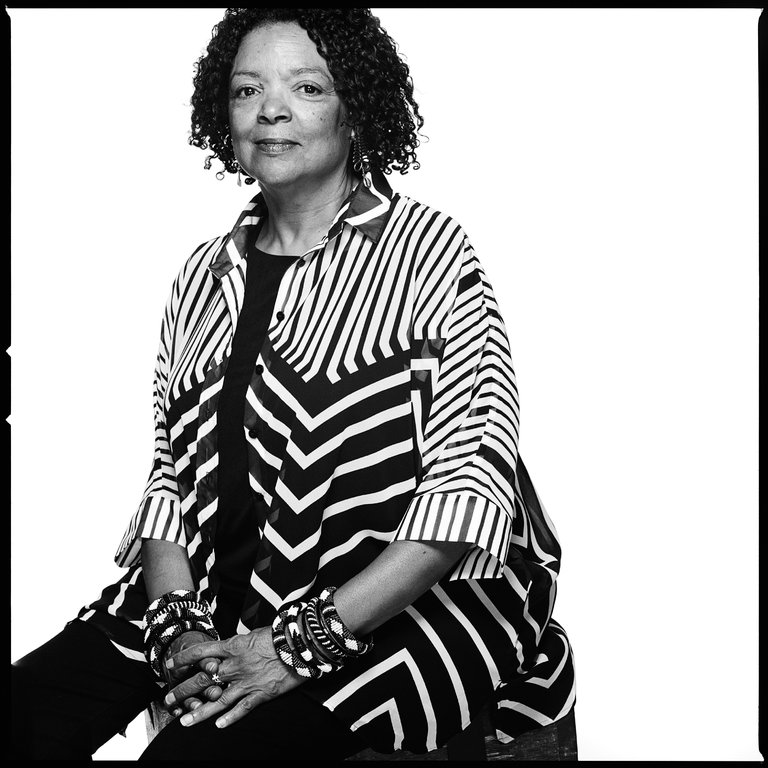BLACK POWER 50
Edited by Sylviane A. Diouf and Komozi Woodard
Illustrated. 144 pp. The New Press. Paper, $24.95.
THE BLACK PANTHERS
Portraits From an Unfinished Revolution
Edited by Bryan Shih and Yohuru Williams
Illustrated. 272 pp. Nation Books. Paper, $24.99.
In 1966, the Black Power movement was born. The year represented a crossroads in black America, with the wounds from both the Watts riots and the assassination of Malcolm X still fresh. Racism was very much alive, so a hard-nosed realism about how to exist within the confines of white America was still a priority. But another way of thinking began to manifest, one that was much more concerned with uplifting the idea of being black than with gaining equality from whites. In the summer of 1966, Stokely Carmichael and Willie Ricks, two leaders of the Student Nonviolent Coordinating Committee (an organization that, the year before, began to break from its origins with the civil rights movement), started to use the phrase “Black Power” in speeches. The movement now had a name, and that fall it had a public face, with the founding of the Black Panther Party for Self-Defense in Oakland, Calif., by Huey Newton and Bobby Seale.
This year represents the 50th anniversary of the Black Power movement. Despite some of its iconic images, it has historically taken a back seat to both the civil rights movement and the Nation of Islam, in large part because of the absence of a singular, generation-defining leader like Martin or Malcolm. But it is the movement that most closely mirrors the current rise of activism, outspokenness and unabashed blackness that gains its strength less from any leader or organization than from the pride-filled power of the hive. Even though some people have shunned the comparison, Black Lives Matter is our Black Power, a purposefully polarizing phrase meant to inspire hope and strength in a dire time of helplessness, much to the chagrin of many on the outside. Our current moment — this President-elect Trump moment — is another crossroads for Black America, and so this anniversary is extremely relevant, as is the arrival of two anthologies: “Black Power 50,” edited by Sylviane A. Diouf and Komozi Woodard, and “The Black Panthers: Portraits From an Unfinished Revolution,” edited by Bryan Shih and Yohuru Williams.
In the foreword to “Black Power 50,” published in conjunction with a yearlong program of the same name at the Schomburg Center of the New York Public Library, in Harlem, the former director Khalil Gibran Muhammad writes that the book “was never meant to be a blueprint for the future. It was never meant to be a source of inspiration for activists today.” But reading through the volume, you see how we arrived at a place where black movements are mobilizing online and in the streets, where a National Museum of African-American History and Culture now exists on the National Mall, and where the San Francisco 49ers quarterback Colin Kaepernick refuses to stand for the national anthem. The reality is that “Black Power 50” isn’t a blueprint for the future; it’s an explainer for the present.
The two books diverge in certain key respects. “Black Power 50” is, in some ways, a collection of the greatest hits. The book grants significant real estate to the major players, events and issues. You will finish it knowing more than you did before about Newton, Seale, Eldridge Cleaver and Kathleen Cleaver, James Baldwin and Angela Davis. There are chapters on prison activism and “education for liberation.” And be it visual art, music or fashion, the aesthetics of what it means to display Black Power is beautifully depicted, in both text and archival images. At its core, “Black Power 50” serves as an excellent textbook, one that not only covers all the bases but also dives into aspects of the movement that have received scarce attention, most notably (and, for me, surprisingly) the international influence of Black Power, from a photo of members of the Australian Black Panther Party to a reminiscence from an Israeli Black Panther.
While “Black Power 50” serves a distinct purpose in digging deep into the story you thought you knew, “The Black Panthers: Portraits From an Unfinished Revolution” succeeds by destroying any assumptions you may have had. The book tells the story of the Black Panthers through first-person accounts from people who were part of the movement but who mostly were not the stars — people who look like they could be my aunts and uncles.
Our culture has focused so much attention on the most visible members of the Black Panthers that it has been easy to forget it was a nationwide organization — an entity that needed to attract ordinary people who believed in something and were also willing to work for it. Being a Panther for many carried with it the same voluntary requirements of someone on the deacon board of a church: It wasn’t your full-time job, but it was certainly one of the most important parts of your life, your defining characteristic. Phyllis Jackson, now a 66-year-old professor of art history at Pomona College, was a communications secretary in the national headquarters of the Black Panther Party. “We don’t have to be the hero when we join,” she says, describing the life of most of the other people pictured in the book. “You become the hero through practice.”
For the full story of the Black Power movement, these two anthologies should be read together; each one fills in what the other lacks. “Black Power 50” contextualizes the influence and scale of the movement, while “The Black Panthers” does the much needed task of bringing the movement down to earth.
>via: http://www.nytimes.com/2016/11/25/books/review/black-power-50-black-panthers.html?_r=1


